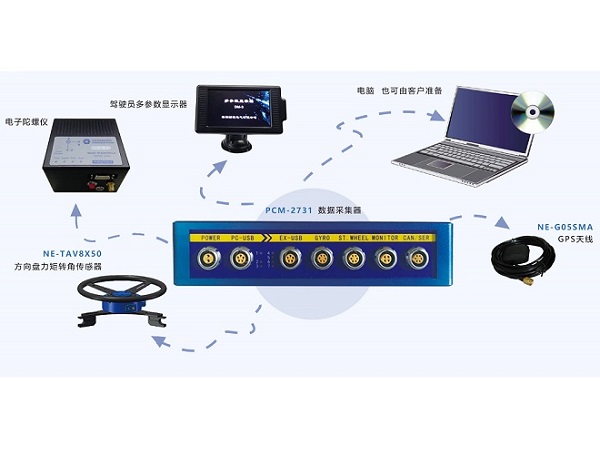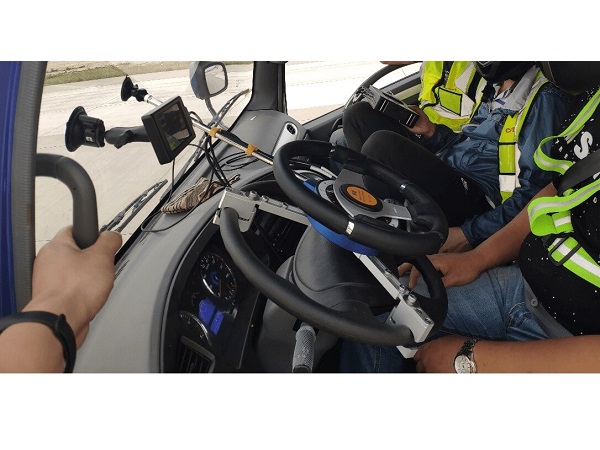Automobiles are currently the main means of road traffic and goods transportation. When people buy and use them, they often refer to the various parameters and values of the automobile, and drive the vehicle correctly according to these. Each automobile manufacturer will also correct the vehicle before leaving the factory. Cars undergo various tests and adjustments, and one of the most important ones is handling stability. What is the handling stability of a car? The following editor of Naiou will give you a detailed introduction, and sort out the test content of handling stability and the main instruments for your reference.
One, the steering stability of the car
1. Definition of handling stability
The steering stability of a car means that the car can follow the direction given by the driver through the steering system and the steering wheel without the driver feeling excessively nervous or fatigued, and when it encounters external interference, the car can resist the interference and maintain The ability to drive steadily. The steering stability of a car is an important evaluation index for the active safety of the car. From the perspective of vehicle engineering, it is mainly human driving behavior manipulation that leads to abnormal roll and pitch of the vehicle, which leads to changes in the grip of the tires, resulting in oversteer and understeer, and the tendency of the body to roll over.
The steering stability of a car consists of two parts that are related to each other: one is maneuverability and the other is stability. Good maneuverability means that the car can run according to the driver's requirements; good stability means that it can resist interference.
2, the performance of poor control stability
(1) The car changes direction by itself. Lift or steering system, tires, suspension, etc. issues.
(2) Turning response is slow. The transmission ratio is too large.
(3) Swaying from side to side, the driving direction is difficult to stabilize.
(4) A car with poor handling stability will lose the sense of road at high speeds or when turning sharply, which makes it difficult for the driver to judge.
(5) The car cannot control the direction under certain conditions. Unable to steer, flick, skid, or roll over when braking.
Two, Factors affecting car handling and stability
1. Vehicle weight distribution: the position and height of the center of gravity, these positions will affect the rolling inertia, yaw and pitching inertia of the vehicle motion, which makes it difficult to control the vehicle entering a curve.
2. Chassis: Chassis design geometry, unsprung quality, etc. are all control design factors.
3. Suspension: Generally speaking, the harder the suspension, the better from the control point of view, and the smaller the suspension stroke is better. However, in reality, the ride comfort and the passage may be the opposite, so at this time there will be a compromise and some sacrifices in order to achieve their special positioning.
4. Steering: The direction in which the steering force and road force are transmitted back to the steering wheel, as well as the steering ratio between the steering wheel turn and the wheel turn, will affect control and perception. This steering feel is also an aspect that affects the control.
5. Braking: Excluding the direct linearity of the brake pedal, etc., it also includes the support of the tire grip and the ESP body stability system.
6. Body shape: body geometry and aerodynamics, aerodynamics are more reflected in high speed, the energy consumption of the whole vehicle above 60km/h is used to counter wind resistance, so you can imagine how powerful the wind is.
7. Body stiffness: The body stiffness is not only helpful for passive safety but also conducive to handling, which is why automakers all advertise how good their body stiffness is.
Three, the test content of car handling stability
Handling stability is very important to car form safety and brand value positioning. It has always been an aspect of car manufacturers’ attention and investment. Therefore, there will be many development tests. The tests are divided into subjective and objective tests. A few more important and typical automobile handling stability test contents are briefly introduced:
1. Oriented circle: Oriented circle generally refers to the ISO4138 standard, and there are three test methods.
(1) Change the speed of the vehicle with constant radius;
(2) Turn in the same direction and change the speed;
(3) Wait for the vehicle speed to change the steering wheel angle.
This maneuver reveals the vehicle's understeer/oversteer behavior, steady-state roll angle, steering as a function of lateral acceleration, and sideslip as a function of lateral acceleration.
2. Jturn test or fish hook test: Jturn test and fish hook test generally refer to NHTSA test standards, mainly testing the roll of high-mass vehicles and whether they will roll during intense driving. The main purpose is to consider whether the driver can safely drive back to the road in response to such conditions, and whether the vehicle will roll over when turning too much.
3. Snake-shaped pile-through test: The snake-shaped pile-through test mainly tests the flexible steering and accuracy of the vehicle, and tests whether the vehicle can be corrected in time when the steering change input is input to maintain the target path.
4. Emergency line change/elk test: The emergency line change/elk test generally refers to the ISO3888 standard, mainly to reflect the maneuverability of the vehicle under extreme conditions. Many overseas tests have shown that a well-controlled car is not necessarily Able to get good results in the elk test. In addition, the manufacturer's calibration of ESP will greatly affect the performance of the Elk test, so it is necessary to analyze the specific conditions.
Some of these tests have very good objectivity, and some are subjective. Tests such as the fish hook test have good consistency and objectivity, and objective values can be used. However, when it comes to the elk test, the objectivity is very poor but it is easy to operate and test. The automobile handling stability test is scientifically rigorous, but at the same time it is subject to various consistency constraints, so it cannot be concluded completely through quantification, and it needs to be judged by a comprehensive subjective driving experience.
Fourth, the main test equipment for vehicle handling and stability
1, gyroscope
The gyroscope is a rotor that is placed on the inner and outer frames and rotates at a high speed of about 24,000 rpm to 30,000 rpm. It has two basic characteristics: directionality and precession.
(1) Orientation: Unless subjected to external force, the direction of the rotor axis will remain unchanged;
(2) Precession: If the rotor does not rotate, when a heavy object is hung on the inner frame, the inner frame will flip along the direction of the heavy object under the action of gravity. When the rotor rotates at a high speed, the inner frame does not turn over, but the outer frame rotates around its own axis of rotation.
2, force measurement steering wheel
The force measuring steering wheel can be used to measure the parameters of the car steering wheel. Its principle is a special measuring instrument made of a combination of internal torque measurement and displacement measurement. General steering wheel torque measurement uses strain gauges to make a special torque meter. The angular displacement of the steering wheel is measured by an angular displacement sensor.
The gyroscope and the force measuring steering wheel are actually part of the entire automobile handling stability test system. In addition, the system also includes a data collector, a driver's multi-parameter display, etc., which can systematically collect and analyze test data. The main measurement parameters include vehicle speed. , Time, steering parameters, vehicle angle, etc.
Regarding the handling and stability of a car, the above is all the content compiled by Naiou editor for everyone. I hope it can be helpful to everyone. Luoyang Naiou Electric Co., Ltd. is a high-tech enterprise with many years of experience in research and development and production of automobile performance test system equipment. The main products include automobile handling stability test system, automobile ride comfort test and analysis system, etc., if necessary Leave a message on our website, or call the customer service number for detailed consultation.






 网站首页
网站首页 电话咨询
电话咨询 返回顶部
返回顶部